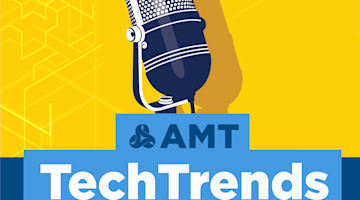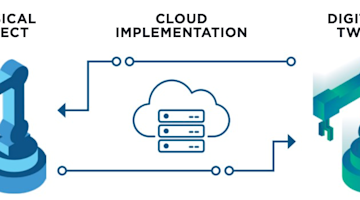In digital manufacturing, edge computing is the application of a computer, programmable controller, or other electronic device installed between a data source (equipment or process) and the balance of a digital manufacturing network. Edge computing is one of those technologies that may be absolutely required in some instances or may be optionally applied for strategic purposes in others.
You may likely find that you are already doing edge computing in your facility. It is common practice to install a data collection device on a piece of equipment or process to collect information for display or analysis. In this case, these devices can be considered an edge computing device. This is one of the simplest forms of edge computing.
In its full implementation, edge computing involves distributing computers, network routers, switches, or a combination of both at strategic locations on your shop floor. These devices may perform a variety of different functions within a digital manufacturing system:
Collect and/or pre-process data
Provide isolation between pieces of equipment and the network
Organize equipment into logical groupings on the network
Provide a layer of security to protect your equipment and your data
Although there is a cost for installing edge computing devices, many benefits can be derived from these devices as part of a digital manufacturing strategy.
Connectivity
Connectivity has historically been the primary reason for applying edge computing devices on the shop floor.
There can be any number of cases on a typical shop floor where information useful to your digital manufacturing decision processes exists. Still, there is no inherent means to access that data or to transmit it to a data collection system. Examples of these cases are a piece of equipment that does not have an electronic controller capable of publishing data, a manual operation or inspection station, or any other location where useful information may reside but isn’t currently being collected.
Another common use case for an edge computing device is to function as a “bridge” (or adapter) to connect data sources that cannot be easily supported on your digital manufacturing network. Generally, these data sources can publish data. Still, either the physical connection to the network or the protocol (language) used by these data sources is not compatible with modern networking technologies.
Equipment Isolation
There are several reasons why one might want to create a level of isolation between a piece of equipment and the balance of the digital manufacturing network.
Some of the problems addressed by edge computing devices are:
Chatty Devices – The communications interface on some older pieces of equipment was often designed expecting that they had a dedicated link to a data collection device. These devices continuously spew data and make accessing the network difficult for other devices.
Network Hogging – Somewhat similar to the issue with chatty devices, some older devices latch on to the network whether they have any data to transmit or not. In this case, they never allow other devices to communicate.
Protecting Equipment From Your IT Department – Many pieces of equipment incorporate capabilities that look like a traditional PC. The normal tendency is to treat these devices in the same way as one would a standard computer – directly connect them to a shop floor network. The standard practice employed by most IT departments is to periodically roll out upgrades, software updates, or security patches to all devices connected to the network. This can cause multiple problems for production equipment. At a minimum, the impact may be that the system ceases or does not function as expected. In other cases, the results can be catastrophic, damaging equipment, products, or personnel. Recovery from these issues can be complicated and time-consuming.
Security
An edge computing device (a managed Ethernet switch, a computer, or a combination of both) can be important to your network and data security strategy.
The traditional way of thinking about security is protecting equipment from being accessed from an external source. However, it is also important to consider protecting the balance of your digital manufacturing infrastructure from a piece of equipment. Should a virus or other threat be introduced to the equipment, you want to isolate that threat and not allow it to propagate throughout your network.
Conclusion
Edge computing devices have historically been applied on a tactical basis to meet the needs of a data collection system. In the future, these devices will likely be used more broadly on a strategic basis – addressing network segmentation, enhancing data collection and analysis near the data source, and creating a secure barrier between the equipment and the balance of your digital manufacturing network. For more information on the application of edge computing devices, see the “Digital Manufacturing: Edge Computing” white paper.









